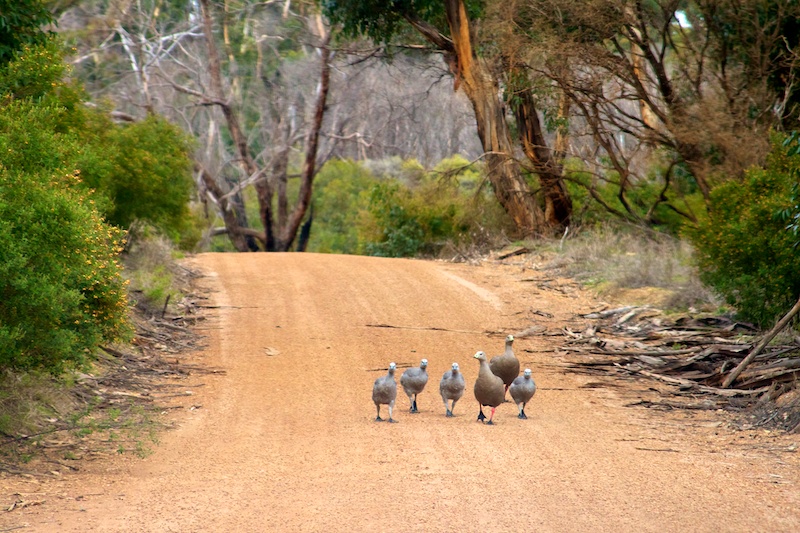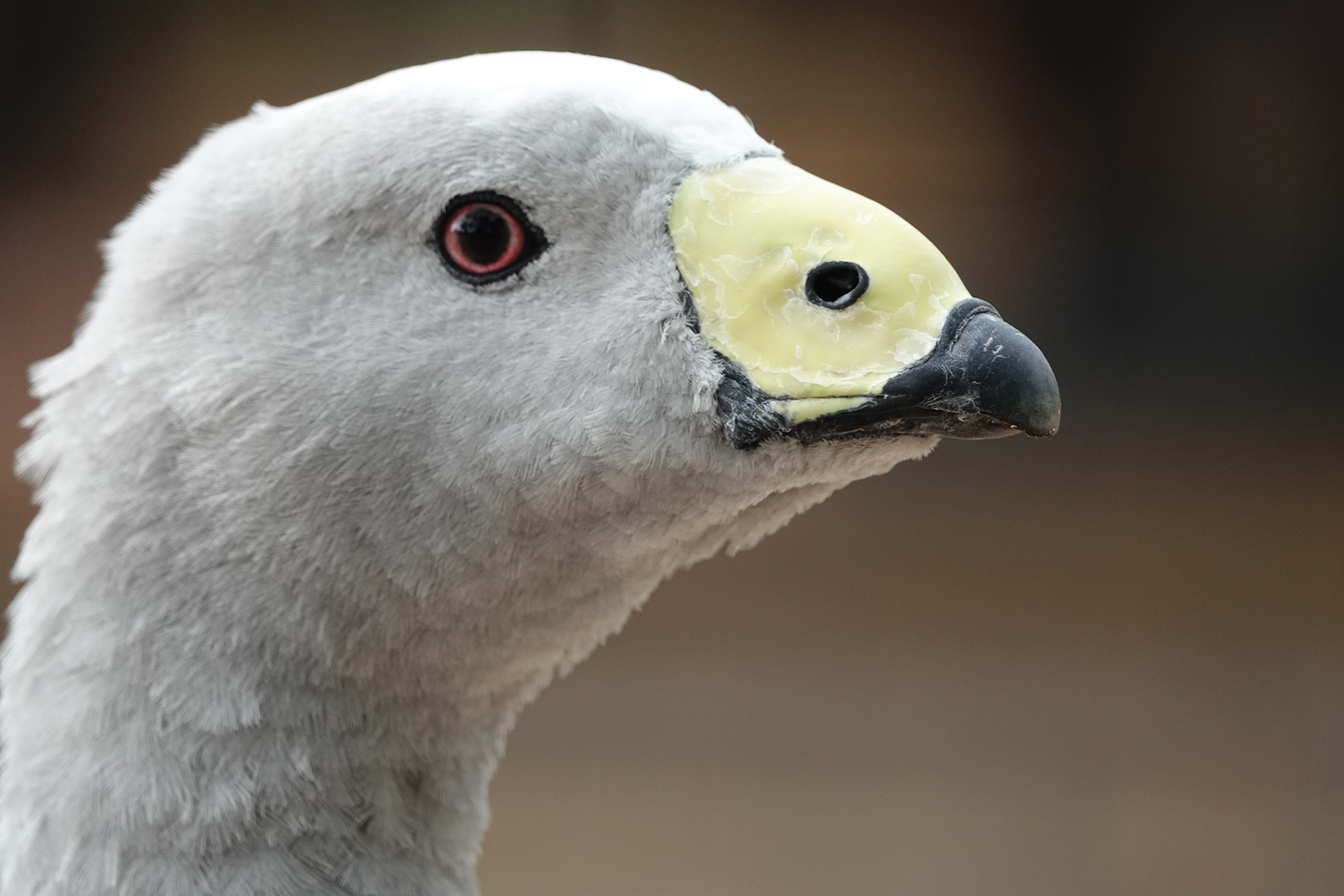Behaviour
Call
Distinctive loud, deep pig-like grunts or honks. Male: loud harsh ‘ark, ark-ark, ark-ark’; Immature: reedy whistles.
Diet
The Cape Barren Goose is a grazing bird, eating predominantly common island tussock grass, Poa poiformis, as well as spear grass and various herbs and succulents. They also eat pasture grasses, including barley and clover, as well as legumes.
Movement
The movements of the Cape Barren Goose are essentially unknown. It seems to be largely sedentary, although there does appear to be some movement of birds between islands and, based on moderately frequent records, some dispersal to the mainland during summer when non-breeding geese generally leave the islands for the mainland where they feed on improved pasture.
Breeding
The Cape Barren Goose reaches sexual maturity at three years of age. After forming a monogamous pair and mating, it lays its eggs between April to November. It builds saucer shaped nests from twigs, grass and feather-down and defends its nest noisily. Clutch size is anywhere between 4-7 white eggs that are incubated by the female for a period of 35-40 days.
Field Guide
Improve your identification skills. Download your Cape Barren Goose field guide here!




